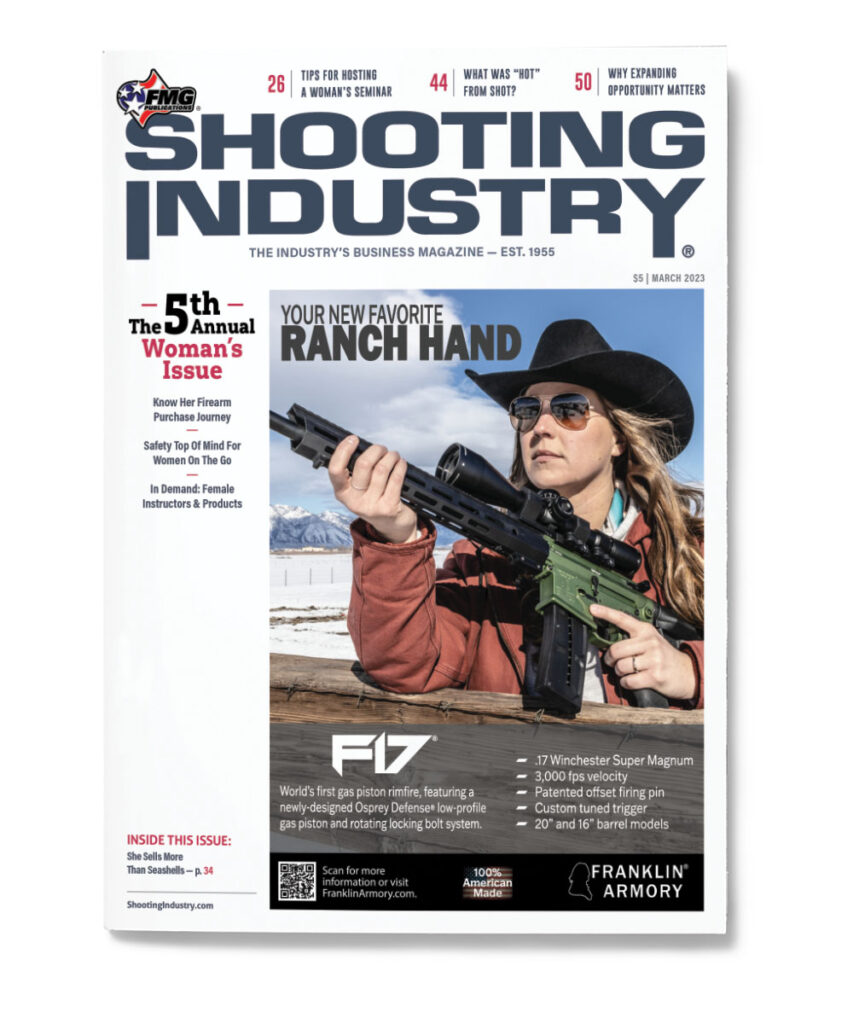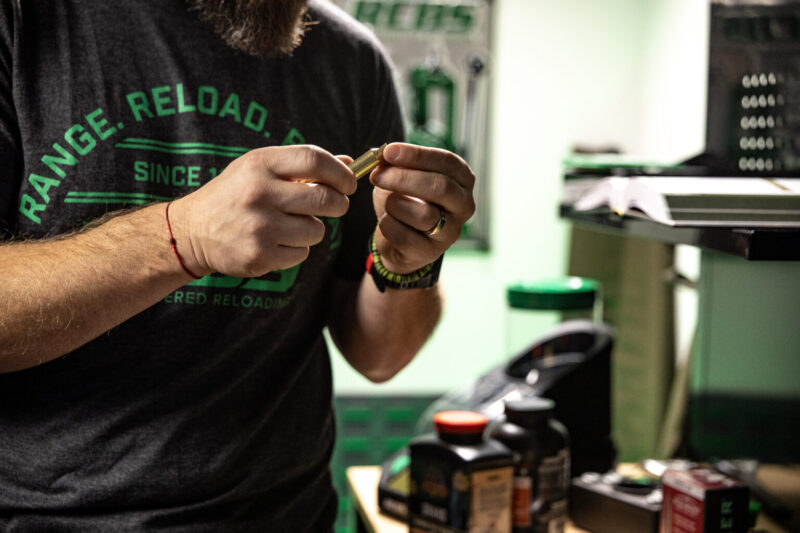Insights Into The Firearm Purchase Journey For Women
It’s not just a fad. Women continue to be a growing force in the firearms market, representing 39% of firearms buyers from 2015 through 2020.
Helping to fuel this growth is the trade’s increasing realization women are capable shooters and want much more than pink products. Better understanding women’s mindset and their frequently different approaches to the purchase process are key factors to help focus customer service and drive new business opportunities for retailers and trainers.
Survey Uncovers Differences
In 2020, Southwick Associates and NSSF partnered to better understand the shifts in firearms consumer behavior by updating the original firearms consumer segmentation study conducted five years earlier. These studies grouped firearm consumers based on their needs and motivations to purchase a firearm, rather than their demographic characteristics or participation. (Our article in the 2021 Shooting Industry Woman’s Issue summarized three of the segments containing significant portions of women — unsurprisingly all protection based.)
Last year, Southwick Associates expanded this work to explore the purchase journey each segment travels through, from realizing the need or desire for a firearm through to the post-purchase experience. Fundamental to these new insights is knowing a customer’s demographic appearance doesn’t dictate their motivations or interests, and there are differences in how each consumer segment approaches a purchase.
We separated women from the data set to explore how they compare to men in the firearms purchase journey. Let’s look at some of the differences.
It Starts With Awareness
Four stages of the purchase journey were explored — starting with the awareness of the need to buy a firearm, to research conducted, the purchase and a post-purchase reflection.
In the awareness phase, more than 8 in 10 women noted a specific event motivated them to purchase their most recent firearm. Even though increased crime, social unrest and politics/legislation were the top inciting events among all gun buyers in the past six years, women were significantly more likely to have had a bad personal experience themselves or to have known someone who had a bad personal experience. They wanted to be prepared should a situation arise again. Women were also more likely to have been encouraged by family and friends to purchase a firearm, meaning efforts to spur discussions about the benefits of firearm ownership may boost interest.
Like men, women’s sentiments about owning a firearm and the purchase process evolve through various phases. “Excited,” “confident” and “enthusiastic” were top sentiments among women as they first became aware they wanted to buy a gun.
However, in the awareness phase, women were significantly more likely to express feelings of being “overwhelmed,” “afraid,” “nervous,” “safer” and “stressed.” Be sure to take time to reassure these customers of the resources and support available to maintain their interest in purchasing and using a firearm.
Research Plays An Important Role
People these days might think most firearm purchases are bought on a whim, especially over the past couple of years. This is not necessarily the case; only a small percentage of gun purchases were an impulse buy. Most gun buyers revealed they conducted research prior to the purchase.
While both men and women primarily consult typical information sources, such as websites or consumer reviews, women are more likely to gather the input of friends and family and to try different firearms — either at a range or with friends and family — before purchasing. Although women are more likely to have tried a few types of firearms prior to purchasing, recommendations are a key factor in their purchase process, with more than two-thirds of women reporting they sought a recommendation from the store clerk.
Top sentiments among women after the research phase include “satisfied,” “excited” and “confident.” Similar to the awareness phase, in the research phase women were still more likely to express feeling “overwhelmed,” “afraid,” “nervous,” “safer” and “stressed.”
Purchase & Post-Purchase Observations
During the purchase phase, the majority of women who sought a recommendation from the store clerk purchased the gun recommended to them, emphasizing the importance of clearly understanding their needs to provide a reliable and justified recommendation.
If your store doesn’t already offer or have references and recommendations for firearm education or training, you’re missing an opportunity to better help women. Women have a higher propensity for firearm education or training, with half the women in the study obtaining further education or training with their most recent gun purchase. More than a third of the women obtained education or training from a friend or family member, nearly half took a class and 41% purchased individual instruction.
In post-purchase reflection, practically all women were satisfied with their purchase and just under half recommended to friends or family to purchase a gun. Sentiments among women in both the purchase and post-purchase phases were: “satisfied,” “confident,” “excited,” “safer” and “relieved.”
While we point out some differences women experience while traveling through the purchase process, it’s important to note not all women have the same needs, motivations and experience during this journey. More can be learned about each of the firearm consumer segments to better target your marketing and product mix.
The “Firearms Consumer Segmentation Overview and Purchase Journey Report” is now available from Southwick Associates. For more info, contact Nancy Bacon at nancy@southwickassociates.com.






